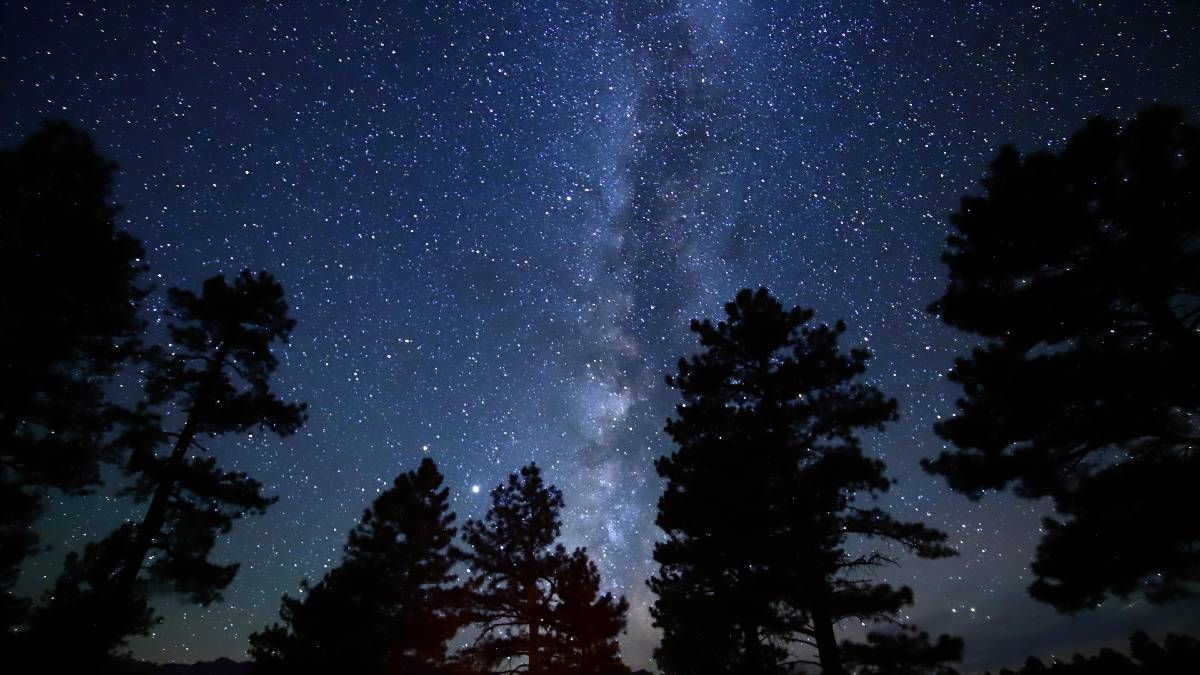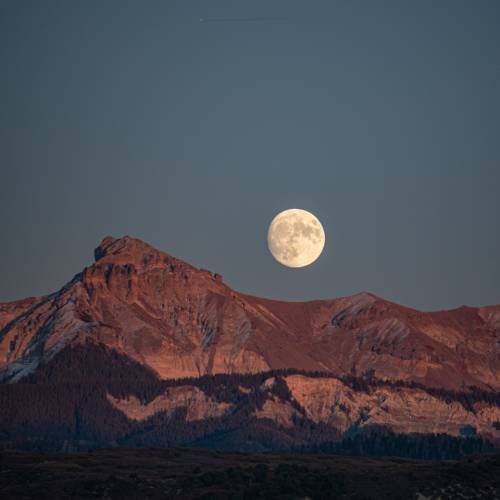Enjoy Dark Skies
Ridgway’s Internationally Recognized Starry Skies
-
Published: Mar 3, 2021
-
By: Tanya Ishikawa
-
Edited: Feb 28, 2025


The rising moon over the Cimarrons and San Juan peaks are a jaw-dropping site on most nights, even when partially cloudy skies provide a beautiful glowing frame for it. But, what our night skies are most famous for are the unrivaled views of the Milky Way, stars, planets, and meteors. Evenings when the moon is missing or only a small sliver are the perfect time to stay outside to discover a few constellations or just enjoy sky gazing to your heart’s content.
Because the entire town of Ridgway is recognized for its dark skies, you are sure to get great views from any balcony, yard or patio in town (if you turn off those outside lights!). We recommend Chipeta Solar Springs & Resort, Orvis Hot Springs & Spa, Basecamp 550, and Double G Ranch & Guest Lodge as great places to stay to enjoy our celestial views. Top of the Pines (TOP) Recreation Area up County Road 5 and Frontier Park south of Chipeta Drive on County Road 23 are also great dark corners of our community with wide-open sky views. In fact, TOP was designated by the International Dark-Sky Association as an International Dark Sky Park in 2021!
Really, there’s not a bad seat in Ridgway for viewing our celestial theater. So, grab a drink (hot in the winter to keep you warm), find a comfortable spot (hot springs and jacuzzis can be especially enjoyable), and explore the heavens.
Ridgway’s Out-of-this-World Sights
-
MILKY WAY
The majority of Americans can't even see our own home galaxy, the Milky Way. We can see this amazing cluster of astronomical elements clearly in Ridgway!
-
METEOR SHOWERSIn Ridgway, Colorado, we have some of the best views of the multiple meteor showers that happen throughout the year. Our dark skies make it possible to see many more meteors per hour than other locations.
-
CONSTELLATIONS
Ursa Major (the big dipper) is the third largest constellation and easy to pick out most nights during every season in Ridgway. Orion is on the celestial equator, prominent, identifiable, and mostly visible from January to March. Sagittarius and Scorpius constellations straddle the brightest part of the Milky Way over the southern horizon just above Ridgway's iconic Sneffels Range in the summer sky. Pegasus, located in the north sky, is recognized as the seventh constellation. And, there are many more to see.
-
PLANETSDid you know that you can see planets in the sky at different times from dusk to dawn? Planets closer to Earth like Mars and Venus move quickly through Ridgway’s skies, while distant planets like Jupiter and Saturn move more slowly.
-
SPACECRAFTSFrom the common satellite to the International Space Station, many of the glowing orbs in the night sky are human-made space vehicles. Even viewing these terrestrially-sourced features of the sky can be entertaining and educational, especially for children and families visiting Ridgway. No ufos.
Tips for best viewing
-
No Moon: To see the most astronomical features, visit Ridgway on clear moonless nights. The best window of time is usually around 10 days before each new moon, which you can find identified on most calendars.
-
No Clouds: Check weather forecasts for Ridgway, Colorado. A general rule of thumb is to to plan your stargazing for nights when the cloud cover is below 30 percent.
-
Meteor Showers: Watch the news and check astronomy societies for information on what dates meteor showers will happen this year, and plan your vacation to the Ridgway area accordingly. Two big ones are in the same months each year: Perseids in August and Geminids in December.
-
Dusk or Dawn: Schedule your sky viewing into your itinerary. Mercury and Venus are usually visible in the early morning or evening sky shortly before sunrise or after sunset. Planets beyond Earth's orbit such as Mars, Jupiter, or Saturn move more slowly and can be spotted throughout the night depending on their position relative to Earth and the sun. Be sure to research planetary movement at one of the suggested links to know what times to go out for each planet.

